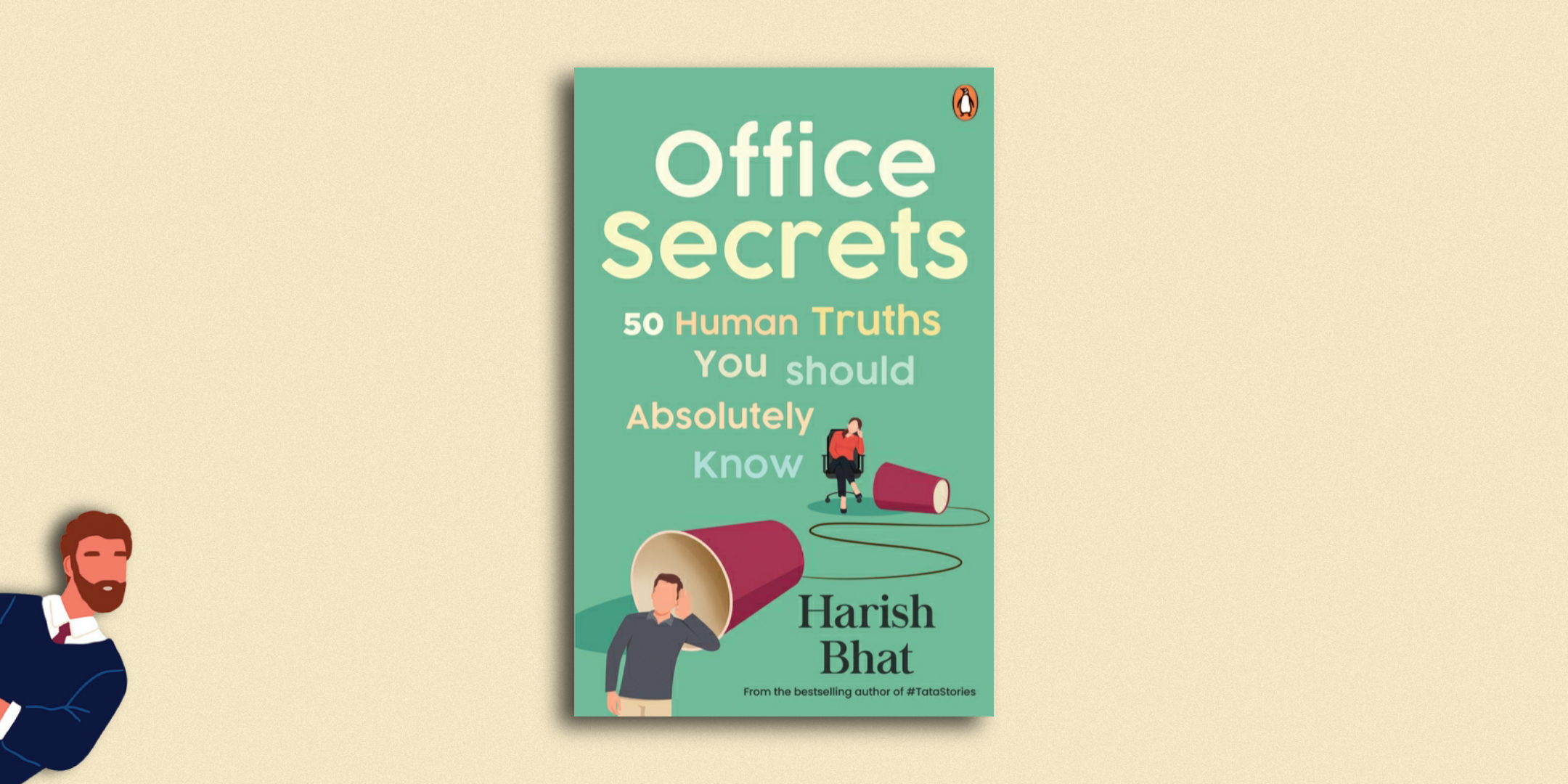Imagine a world where managers not only excel at their jobs but also radiate happiness in the workplace. In Office Secrets by Harish Bhat, we uncover seven simple habits that can bring a smile to any manager’s face. From relishing a hearty lunch and planning fun weekends, to keeping presentations brief and even engaging in healthy gossip, these habits offer a refreshing yet practical approach to finding joy and success in the office.
Get ready to discover the secrets that will completely transform your work life, as revealed in this excerpt from Office Secrets.

***
Seven Habits of Very Happy Managers
Short presentations, saying no to multitasking and making weekend plans—here are some ways to keep a smile on your face.
Stephen Covey, one of the most admired management gurus of modern times, passed away a few years ago. Most of us have read
his bestseller, The 7 Habits of Highly Effective People. Thousands of people have claimed that this book has changed their lives and careers forever.
Here, I pay a simple but irreverent tribute to this influential thinker, on behalf of all office goers. I believe it is important for managers to be both happy and effective. Since Covey has already revealed how we can be highly effective, I tell you what it takes to be very happy at work. Just follow the seven simple habits described below, and you will smile every day.
First Things First, Eat a Good Lunch
As Covey says, we must put first things first. Therefore, a good and relaxed lunch in office takes the highest priority. Without it, you can never really be happy. If you hurry through this essential meal or skip it, you are likely to find yourself in a grumpy mood throughout the afternoon and evening. Your stomach may begin grumbling and you may end up eating too many fat-laden cookies during the rest of the day, which is not good for your waistline or your heartline. On the other hand, a delicious and healthy lunch, had with colleagues, with a good measure of talk and laughter, is a recipe for good cheer
Begin with the Weekend in Mind
Covey’s book advises us to always begin with the end in mind. We modify this advice slightly, and urge you to begin with the weekend in mind. The weekend is an enduring source of happiness, and therefore deserves a lot of attention and planning. Have you made a booking at that Thai spa? Have you decided where to party hard, and with whom? What about dinner with your glamorous ex-girlfriend, who has hinted that she wants to get back in touch with you? If your boss is in a generous mood, could you request him for an off day either on Friday or Monday, thereby creating an extra happy and long weekend? These are just a few of the many complex weekend choices we
are faced with, so clearly we have to begin preparations in earnest by Monday morning.
Keep Your Presentations Brief
We must recognize that no one, not even the chairperson, wants to attend a long and serious PowerPoint presentation these days, when there are many other interesting office pastimes to pursue. So, if you have to think win-win, your presentations must never exceed five slides and must conclude in ten minutes flat. You will find that most things can be summarized within that length and time. Also, your boss will be so happy with the quick ending that he is likely to approve your budgets immediately. If you want to deliver true happiness, begin and end your presentation with an appropriate comic strip visual which makes people smile. That will leave just three slides for the serious stuff, which is just about perfect.
Silence Is Really Golden
Managers love talking at meetings, and this is what gets them into deep trouble in the first place. So, you are likely to be the happiest if you keep as silent as possible, unless you have dramatic views that can potentially change the course of your company’s history. Let others in the room argue and fight among each other, while you remain, like the Buddha, calm and composed amid the gathering storm. Take copious notes, but don’t speak. Once in a while, look up, smile and nod enigmatically at the people who are doing the talking. They will regard these gestures as signs of deep wisdom and understanding.
Engage in Healthy Gossip
Scientific studies have consistently revealed that cubicle gossip is a great source of happiness. If you are a creative individual, you can actually be the source of some gossip. Otherwise you can choose to merely be a conduit for the grapevine. Either way, you are adding to the HQ (happiness quotient) of your office, which is so important in these stressful times. The conference room, email, water cooler, lift, office loo—they are all perfect locations for such talk. There is a caveat to be borne in mind, though. Healthy gossip has boundaries which need to be respected.
Don’t Multitask
Many managers think they must display their professional manhood by engaging in several activities at the same time. They believe multitasking is essential, given the multiple demands at the modern workplace. They also feel good that they are intellectually competent enough to do many things at once. Don’t believe in such rubbish. Multitasking is a recipe for being short of breath throughout the day, which, as we know, leads to hypertension and all its attendant ailments. In addition, it ensures that none of the jobs you are doing ever receive your full attention, leading to a state of niggling unhappiness at all times. To be really happy at the workplace, address one job at
a time, and do it really well. By doing this, you may complete fewer tasks during the day, but you will leave the office with a spring in your step
Refresh and Renew Yourself
Covey speaks about the need for reflection and for renewing yourself, the last of the seven habits he prescribes. This habit is as important for happiness as it for effectiveness. Unless you give yourself time every day to think and relax, you will never really be happy with yourself. There are many practical methods to achieve this. Define daily digital blackout periods, when you will not go anywhere near a computer or a mobile phone. Pursue a creative passion outside the workplace—this could range from painting (which is generally safe) to music (which may be dangerous if you are a bad singer and sing in public). Take time out to run or play tennis or work out in the gym, and use this time to blank out your busy mind. Finally, don’t meet or speak to your boss for at least two days each week, and see for yourself how completely this relaxes your entire being
I think the eighth and most important habit of very happy managers is our ability to laugh at ourselves, which is the first step to having great fun at work.
***
Get your copy of Office Secrets by Harish Bhat from your nearest bookstore or on Amazon.


































